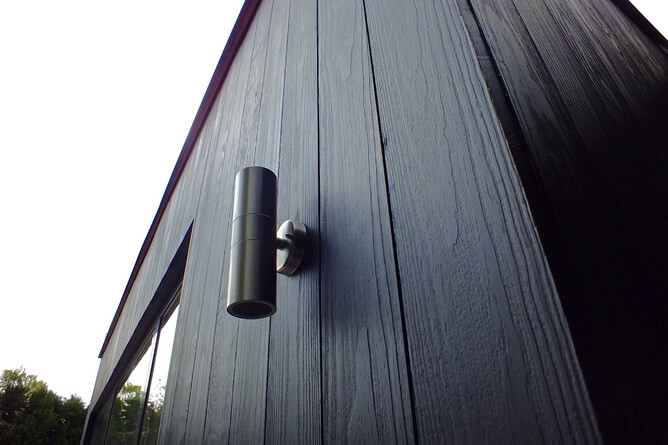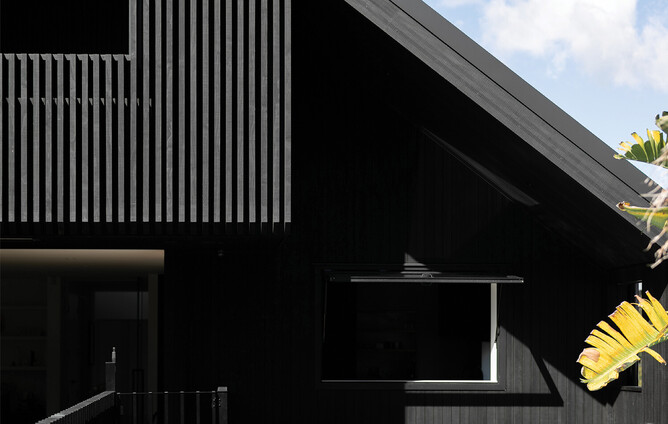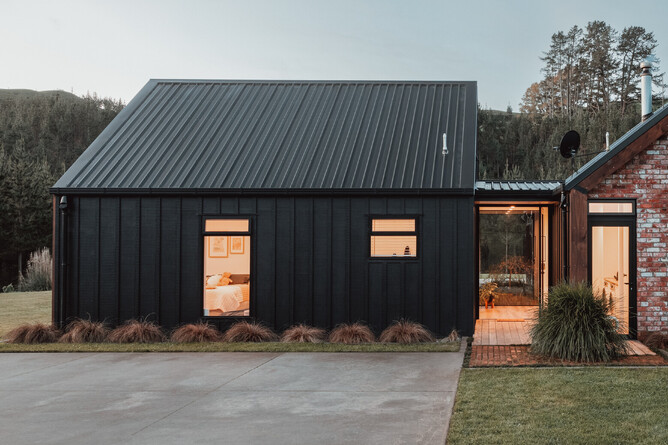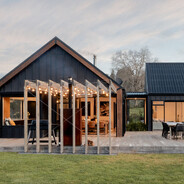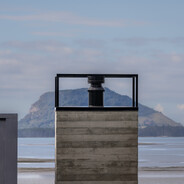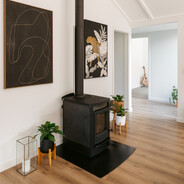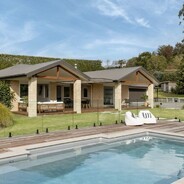When it comes to choosing the right cladding for your home or commercial building, the options available can be overwhelming. In New Zealand, where our architectural landscape blends the modern with the traditional, the demand for innovative, durable, and aesthetically pleasing cladding materials is on the rise. There are many different cladding solutions available and among these are a few of our favourites including, Sugi, Abodo and the classic Enduroclad Board and Batten. In this blog, we will delve into each of these cladding types, exploring their unique features, benefits, and considerations to help you make an informed choice for your next architectural project.
1. Charred Japanese Cedar: Modern Elegance with a Sustainable Twist
Introduction to Charred Japanese Cedar
Charred Japanese cedar is gaining attention in New Zealand for its unique blend of aesthetic appeal and environmental benefits. Charred cedar cladding offers a sophisticated look while championing architectural sustainability. It is known for its durability, natural beauty, and resilience against the elements, making it a favoured choice for modern and traditional home designs alike.
Key Benefits of Charred Japanese Cladding
Sustainability: One of the most compelling reasons to choose charred Japanese cedar cladding is its eco-friendly profile. Japanese cedar is a renewable resource, and its use in construction supports sustainable building practices. The trees used for cladding are typically grown in managed forests, ensuring responsible harvesting and minimal impact on the environment.
Aesthetic Appeal: The natural grain patterns and warm hues of Japanese cedar provide a timeless and elegant look. The wood’s texture and colour can range from light honey to a rich reddish-brown, complementing various architectural designs and styles. Charred Japanese cedar, evokes a captivating blend of rustic elegance and resilience. The process of charring the wood enhances its natural grains, creating a striking contrast between the dark, smoky surface and the lighter undertones underneath. This technique imparts a rich, textured aesthetic and improves the wood’s durability and resistance to the elements. In traditional Japanese architecture, charred cedar is celebrated for its ability to age gracefully, developing a patina that adds depth and character over time, making it a timeless choice for both structural and decorative elements.
Low Maintenance: Charred Japanese cedar is naturally resistant to decay and pests, reducing the need for frequent maintenance. Unlike other timbers, it doesn’t require regular staining or sealing to maintain its appearance and structural integrity. This makes Charred cedar a practical choice for both residential and commercial buildings.
Thermal and Acoustic Performance: The natural properties of cedar contribute to excellent thermal insulation and soundproofing. This can enhance the comfort and energy efficiency of a building, making charred cedar cladding a smart choice for both new constructions and renovations.
Considerations for Charred Japanese Cedar Cladding
Cost: Charred Japanese cedar cladding can be more expensive than some other options due to its high-quality material and import costs. However, its longevity and low maintenance requirements can offset the initial investment over time.
Availability: While charred Japanese Cedar is gaining popularity, it may not be as widely available as other cladding materials. It's essential to work with suppliers who specialise in imported timbers to ensure you can source the cladding for your project. We have a close relationship with Sugi based right here in Tauranga and would happily recommend Sugi for your next architectural project. https://sugi.nz/
2. Abodo: The Pinnacle of Eco-Friendly Timber Cladding
Introduction to Abodo Architectural Cladding
Abodo cladding represents a significant advancement in timber technology, offering a sustainable and high-performance option for modern buildings. Crafted from New Zealand-grown wood and treated using a natural, non-toxic process, Abodo cladding is designed to meet the demands of contemporary architecture while adhering to stringent environmental standards.
Key Benefits of Abodo Cladding
Sustainability: Abodo’s commitment to sustainability is evident in its sourcing and manufacturing processes. The wood used for Abodo cladding comes from managed forests in New Zealand, ensuring that it is harvested responsibly and supports local forestry practices. The natural treatment process is free from harmful chemicals, making it a safer choice for both the environment and architectural house design.
Durability: Abodo cladding is thermally modified with no additional chemicals to enhance its resistance to weathering, pests, and decay. This treatment not only extends the lifespan of the timber but also helps maintain its appearance over time. Abodo cladding is designed to withstand New Zealand’s varied climate, from coastal conditions to inland extremes.
Versatility: Abodo offers a range of finishes and profiles to suit different architectural house styles. Whether you’re looking for a sleek, modern finish or a more traditional look, Abodo’s versatile product range can be tailored to meet your house design preferences. Additionally, Abodo cladding can be used in both vertical and horizontal applications, providing flexibility in architectural design.
Aesthetic Appeal: The natural beauty of Abodo timber, combined with its range of finishes, allows for a high degree of customisation. The wood’s grain patterns and colour variations contribute to a unique and attractive façade, enhancing the overall aesthetic of the house design.
Considerations for Abodo Cladding
Cost: Like charred Japanese cedar, Abodo cladding can be a higher-end option, reflecting its quality and sustainable attributes. However, its durability and low maintenance requirements can justify the investment in the long run.
Installation: While Abodo cladding is designed for ease of installation, working with a skilled contractor who is familiar with the material is crucial to achieving the best results. Proper installation ensures that the cladding performs optimally and maintains its appearance over time.
3. Board and Batten Architectural Cladding System: Natural and Timeless charm
Introduction to Board and Batten Architectural Cladding
The board and batten system is a classic architectural cladding featuring wide boards separated by narrow battens, creating a distinct, traditional pattern. This design is reminiscent of historic buildings and has become a popular cladding option for rural and lifestyle architecture, offering a nostalgic touch. Crafted with passion from sustainable radiata pine, this bandsawn face plywood exudes a natural and timeless charm.
Key Benefits of Board and Batten Architectural Cladding
Timeless Appeal: Board and Batten cladding is known for its classic, rustic charm. The design has been used for centuries and remains popular for its ability to add character and warmth to houses. Whether used on a modern home or a heritage property, Board and Batten can enhance the overall house aesthetic and create a welcoming look.
Versatility: This cladding style can be adapted to suit various architectural designs. By adjusting the width of the boards and battens, you can achieve different looks, from a traditional farmhouse appearance to a more contemporary style. The cladding can be painted or stained in a range of colours to match your design preferences.
Aesthetic Flexibility: Some board and batten systems like Enduroclad from Triclad are available in a range of finishes, including un-primed, pre-primed, or primed with a first top coat, ready for you to add your chosen paint colour finish.
Sustainable Cladding: Most NZ Board and Batten Plywood systems are environmentally sourced and sustainably produced from renewable New Zealand plantation-grown Pinus Radiata. They are generally Forestry Stewardship Council (FSC) certified, ensuring the production environments are responsibly managed and meet the highest environmental and social standards.
Considerations for Board and Batten Architectural Cladding
Maintenance: While Board and Batten cladding can be durable, it does require regular maintenance to keep it in good condition. This includes periodic painting or staining to protect the timber from weathering and decay. Proper maintenance ensures that the cladding retains its appearance and performance over time.
Installation: Installing Board and Batten cladding requires careful attention to detail to ensure a proper fit and finish. It’s important to work with experienced contractors who are familiar with the traditional installation methods and can achieve a high-quality result.
Movement: Some movement of timber can be expected as it expands, and contracts, which can cause possible minor surface cracking (face checking), especially on the North and Western faces.
Summary of House Cladding in New Zealand Architectural Design
As New Zealand’s architectural landscape continues to evolve, the cladding options available are becoming increasingly diverse and sophisticated. Whether you’re drawn to the sustainable elegance of charred Japanese Cedar, the eco-friendly performance of Abodo, or the timeless charm of Board and Batten, there is a cladding solution to meet your needs and preferences.
Each of these cladding types offers unique benefits, from environmental sustainability and low maintenance to classic appeal and design flexibility. By selecting the right cladding, you can ensure that your building not only meets aesthetic expectations but also performs optimally in New Zealand’s varied climate.
